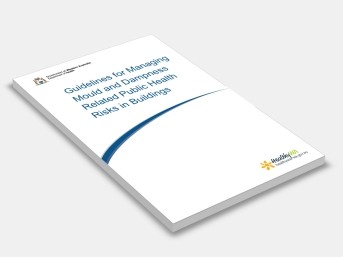Guidelines for Managing Mould and Dampness Related Public Health Risks in Buildings
WA Department of Health
This document has been prepared for owners, landlords, residents and building managers of residential dwellings and public, government and commercial buildings. Public, government and commercial buildings include, but are not limited to, schools, office buildings, day care centres and nursing homes. The guidelines are not intended for infection control in healthcare facilities which is covered by the Australian Guideline for the Prevention and Control of Infection in Healthcare. They are also not intended for Microorganism control in the Food industry which is covered by the Australia New Zealand Food Standards Code. However, these guidelines can still be used in both the Healthcare and Food premises to assist in the recognition, evaluation, remediation and prevention of mould contamination or dampness.
This document covers both mould and dampness. Dampness is the most important condition conducive to mould growth in indoor environments but is also a risk factor for disease in the absence of any visible evidence of mould. Dampness can be defined as any visible, measurable or perceived, unwanted and excess moisture in an indoor environment.
These guidelines are designed for the identification and remediation of mould problems if they occur and the prevention of further contamination (if required). Ideally the prevention of dampness and potential mould problems should be considered at the building design and construction stages: the National Construction Codes have requirements for moisture control in both commercial (Vol 1, Part F1) and residential (Vol 2, Part 2.2) buildings. Building design and construction are beyond the scope of this document.
Contents:
1: Purpose
2: Scope
3: Context
4: Definitions
5: Background
6: Mould Levels and Health Risk Management
7: Mould and Dampness Assessment
8: Assessment procedures
9: Identification of the mould and water damage
10: Evaluation of the extent of mould and dampness problems
11: Identification of the source of the problem
12: Determination of the mould contamination level
13: Simple level contamination
14: Complex level contamination
15: Determination of Fitness for Habitation
16: Mould Remediation
17: Simple Level Contamination
18: Precautions
19: Remediation
20: Complex Level Mould Contamination
21: Remediation Procedures
22: The basic principles of remediation
23: Personal Protective Equipment
24: Environmental Controls (Containment and Air flow)
25: Post-remediation Evaluation Mould Prevention
26: References and resource documents
Appendix A: Building Inspection Checklist
Appendix B: Moisture reduction strategies
Appendix C: Water Damage – Clean up and Mould Prevention
